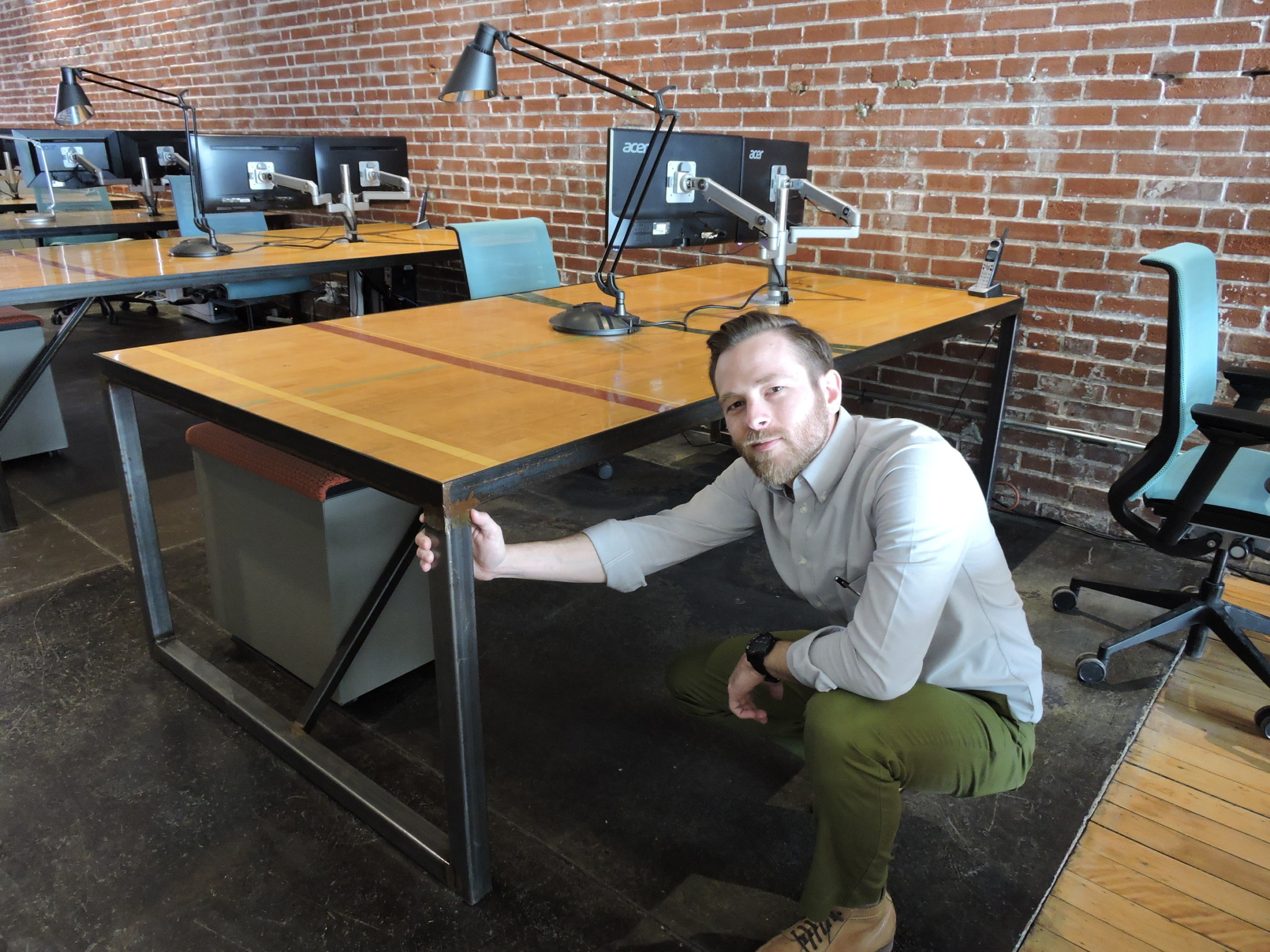
The Fingerprint Part 3: The Rose and the Garbage
In the essay, “The Rose and the Garbage” from the book The Sun My Heart, Thích Nhất Hạnh writes:
“Defiled or immaculate. Dirty or pure. These are concepts we form in our mind. A beautiful rose we have just cut and placed in our vase is immaculate. It smells so good, so pure, so fresh. It supports the idea of immaculateness. The opposite is a garbage can. It smells horrible, and it is filled with rotten things. But that is only when you look on the surface. If you look more deeply you will see that in just five or six days, the rose will become part of the garbage. If you are a good organic gardener and you have the eyes of a bodhisattva, looking at a rose you can see the garbage, and looking at the garbage you can see a rose. Roses and garbage inter-are. The rose and the garbage are equal.””

In two recent blog posts, The Real Comeback and The Fingerprint, I wrote about the importance of hands-on experience, thinking, and design. Besides being a consistent theme at JEMA—getting your hands dirty—the importance of “hands-on” cannot be overstated. In our schools and in our profession, we are asking our students and architects to become greener and greener, while as a culture we have become further alienated from the natural world. There is a growing reaction to this alienation—if you look carefully, the “real” is making a comeback. More and more of our clients ask for the authentic, the natural, and the handmade.
At JEMA, we had an opportunity to engage our whole office on a small, but critically important “hands-on” design project. Our office was expanding and we needed additional desks for our architects and designers. Jon McKee, an apprentice architect at JEMA, led the project. The initial goals were:
-
Size: 4’x 8’ minimum; the desks needed to support 2 monitors and a 36” x 48” set of drawings simultaneously.
-
Green materials: made of recycled materials and/or FSC wood.
-
Regional: made in Missouri.
-
“Hands-on”: handcrafted; we wanted to see the “fingerprint.”
After researching furniture manufacturers’ products, investigating “green” materials, and drawing up multiple solutions, we were still struggling to find the right balance. Our designs were strong, but a bit too conventional. It was after reading the essay, “The Rose and Garbage,” by Thích Nhất Hạnh, that our approach and mentality shifted.
We wanted to build a story. We wanted our desks to be a much smaller version of the New Amsterdam Theater in NYC, where every part and piece of the building is a conversation between the craftsman and the audience.
We found our solution in a very strange place: the trash. Yes, that’s right. We found our rose in the garbage.
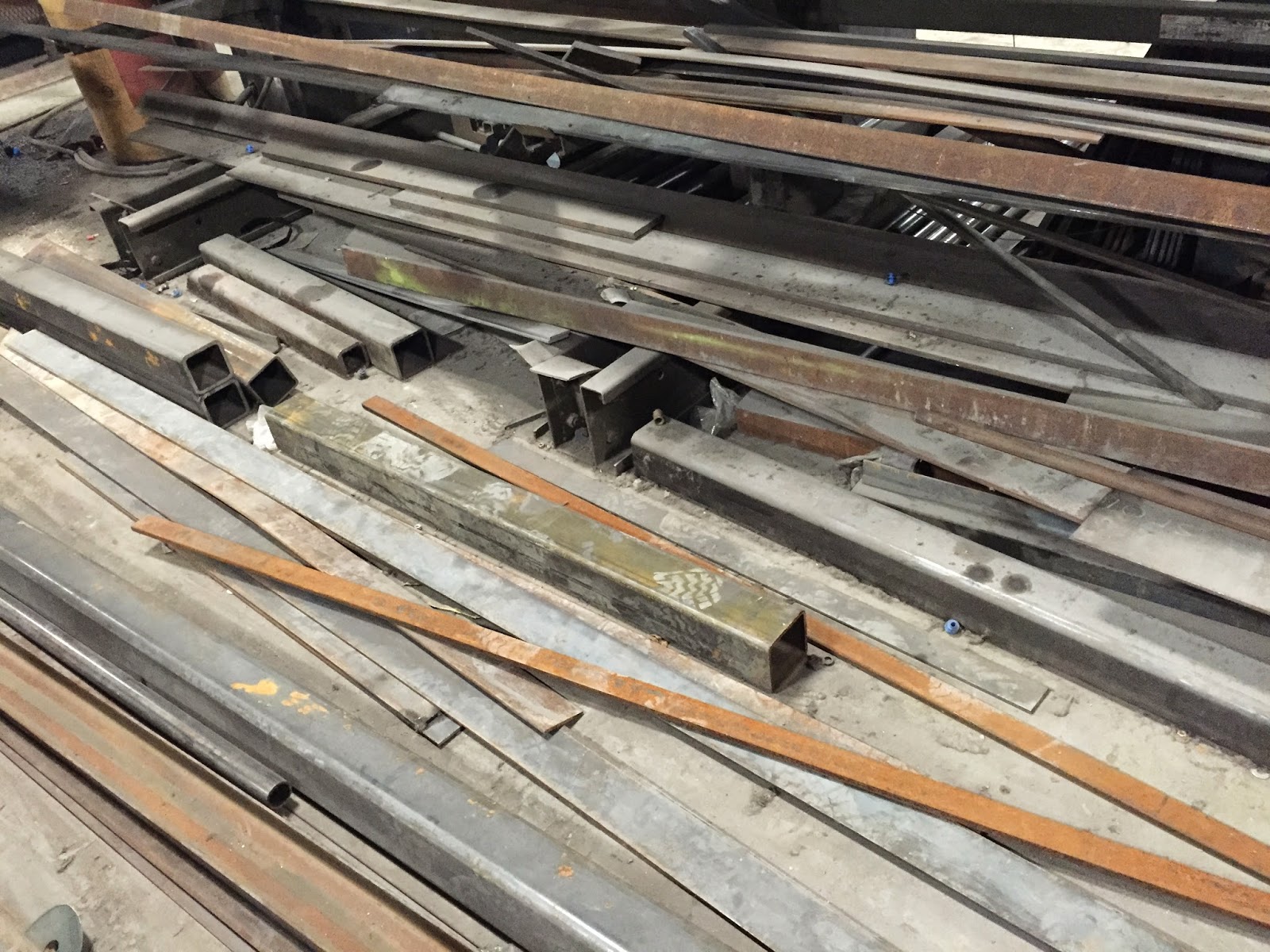
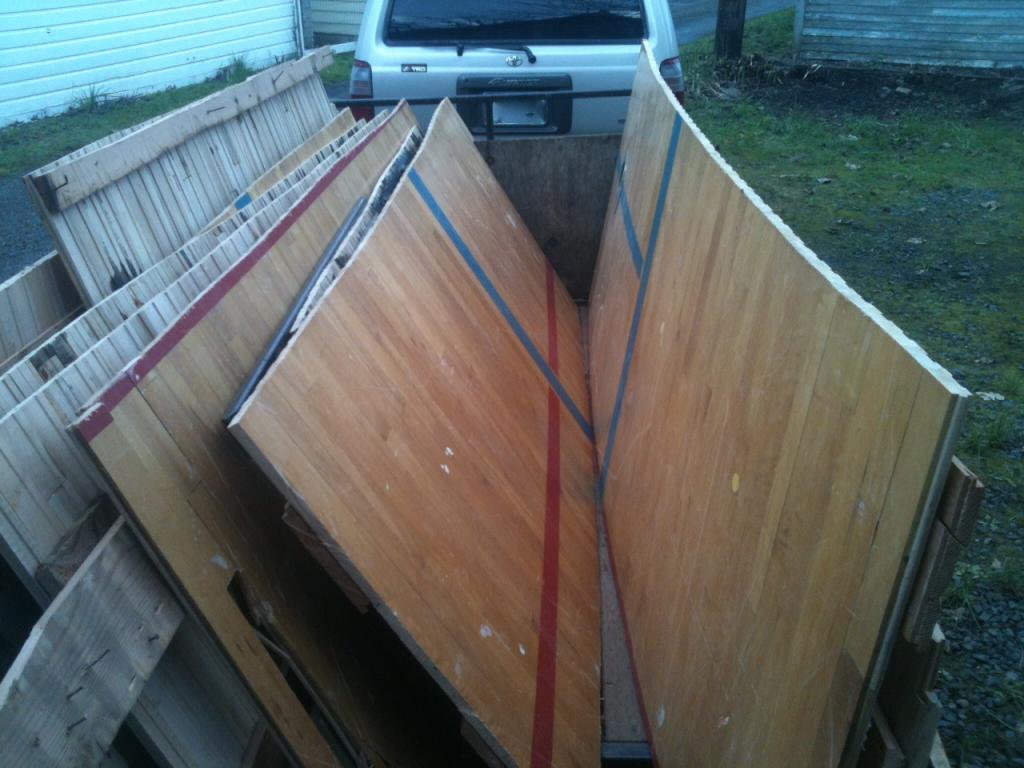

Our basic materials were a combination of reclaimed basketball gym flooring and discarded steel stock. The main ingredients of our desks were destined for the landfill, but we knew they could be re-purposed and transformed.
The solid maple gym floor came from the Clayton Center, which was replacing their original flooring. During the demolition, our landlord was able to convince the general contractor to cut up the old flooring in large sections. Instead of throwing the solid maple flooring into the trash bin, the floor was cut up into 4.5’ x 8.5’ sections and salvaged.
The steel for the desk structure came from a local manufacturer’s waste pile. We researched and discovered a steel shop in Owensville, MO that gets their steel stock from the discarded steel “waste” of a local manufacturer.
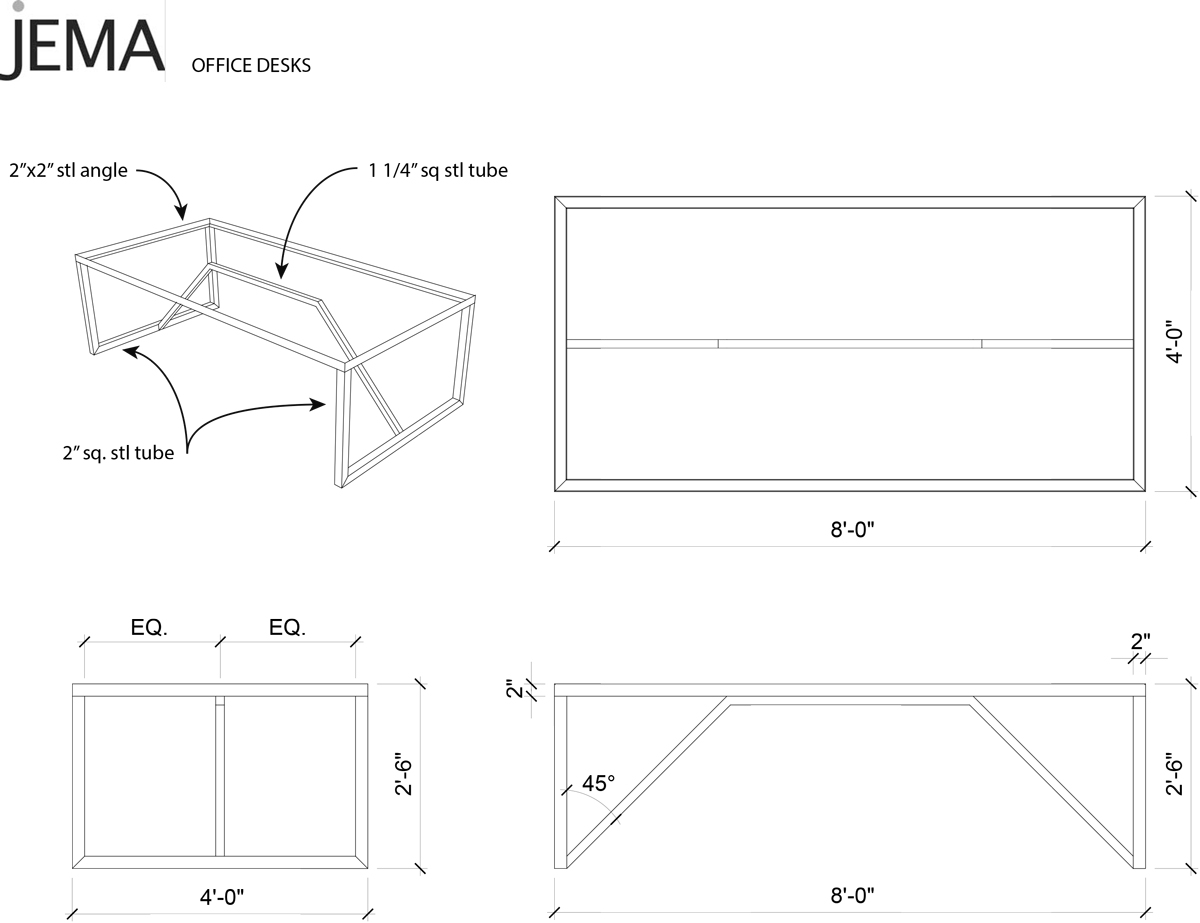
With these two materials in tow, we designed our desks. The frame is simple, clean and elegant. The desktops still have the original high-gloss floor finish on them as well as sections of the red, yellow, and green stripes from the basketball court. There are still some sneaker scuff marks, too.
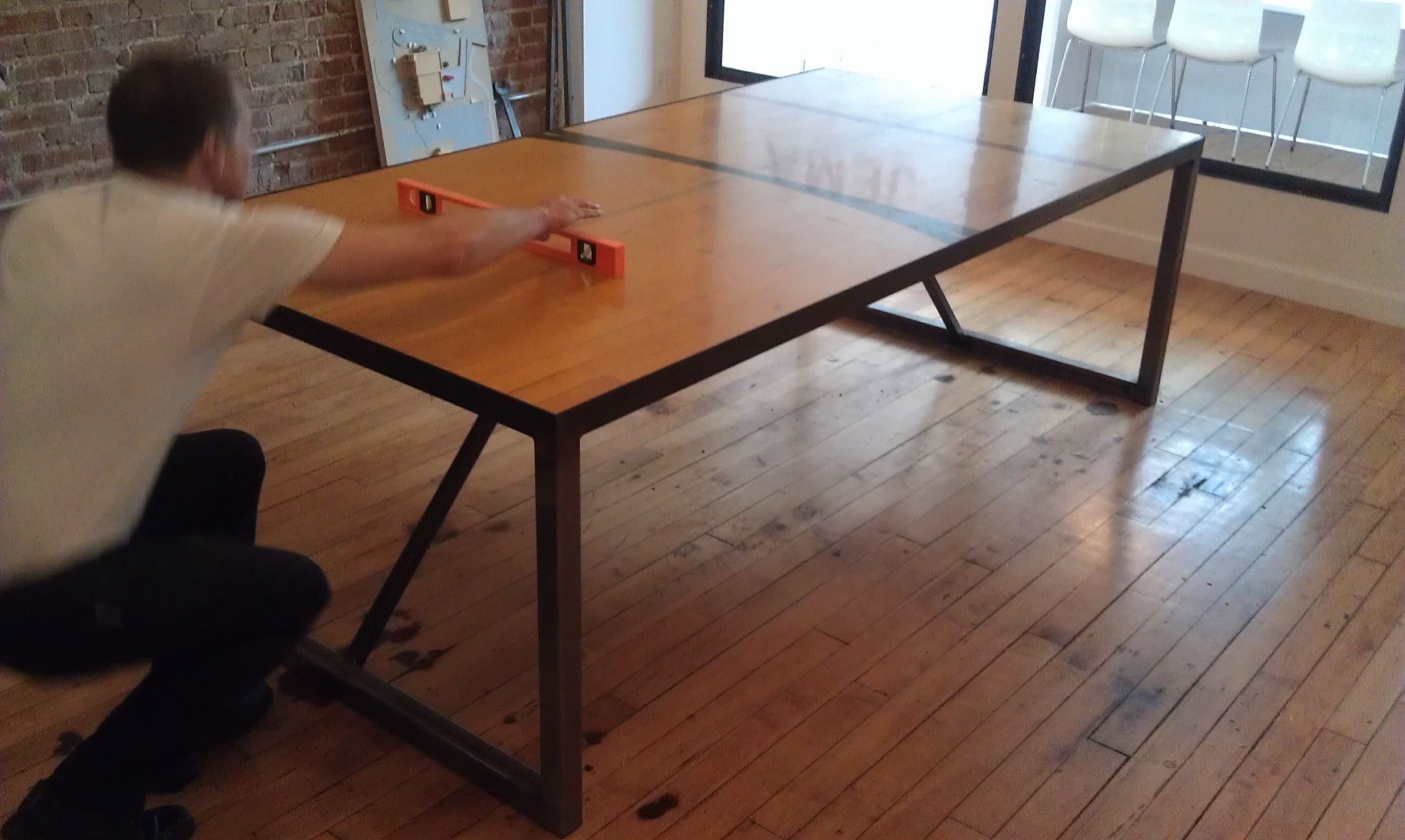
The final touch was assembly. We cut down the wood flooring in our shop. For the steel frame, we left the welds exposed and only lightly brushed and applied hot wax to seal and protect the steel’s natural finish.
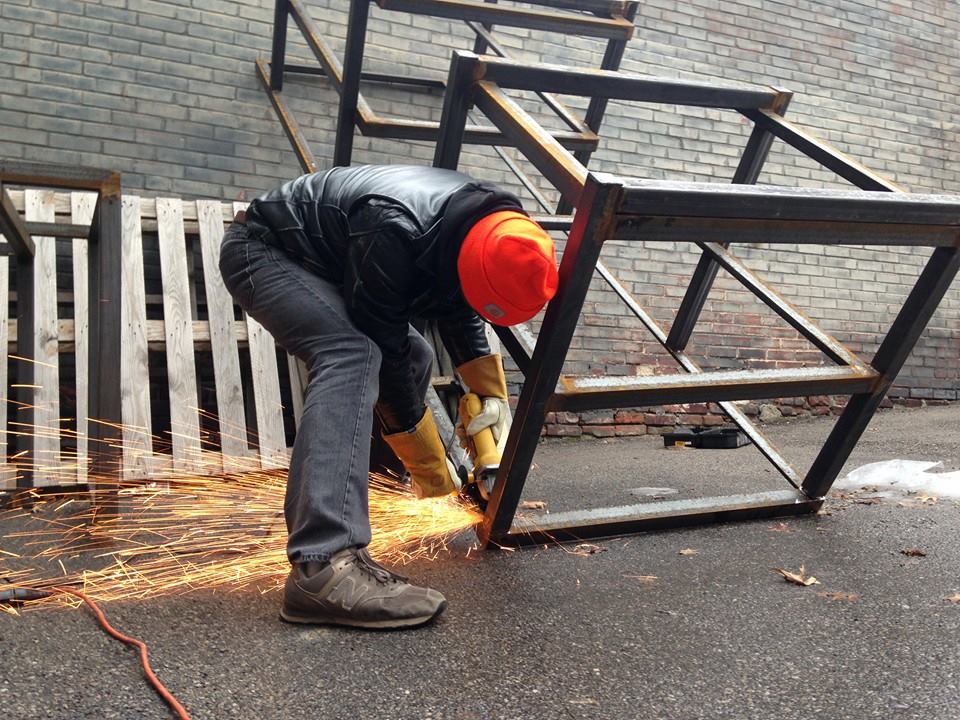
The materials have a memory, a local history, and now a story of inter-being.
Our desks, destined for the garbage, now look like roses. Everyone who visits our office comments on our desks, asking “where did you buy them, and how expensive are they?”
They see only roses, but for us they will always be made of “rotten things.”
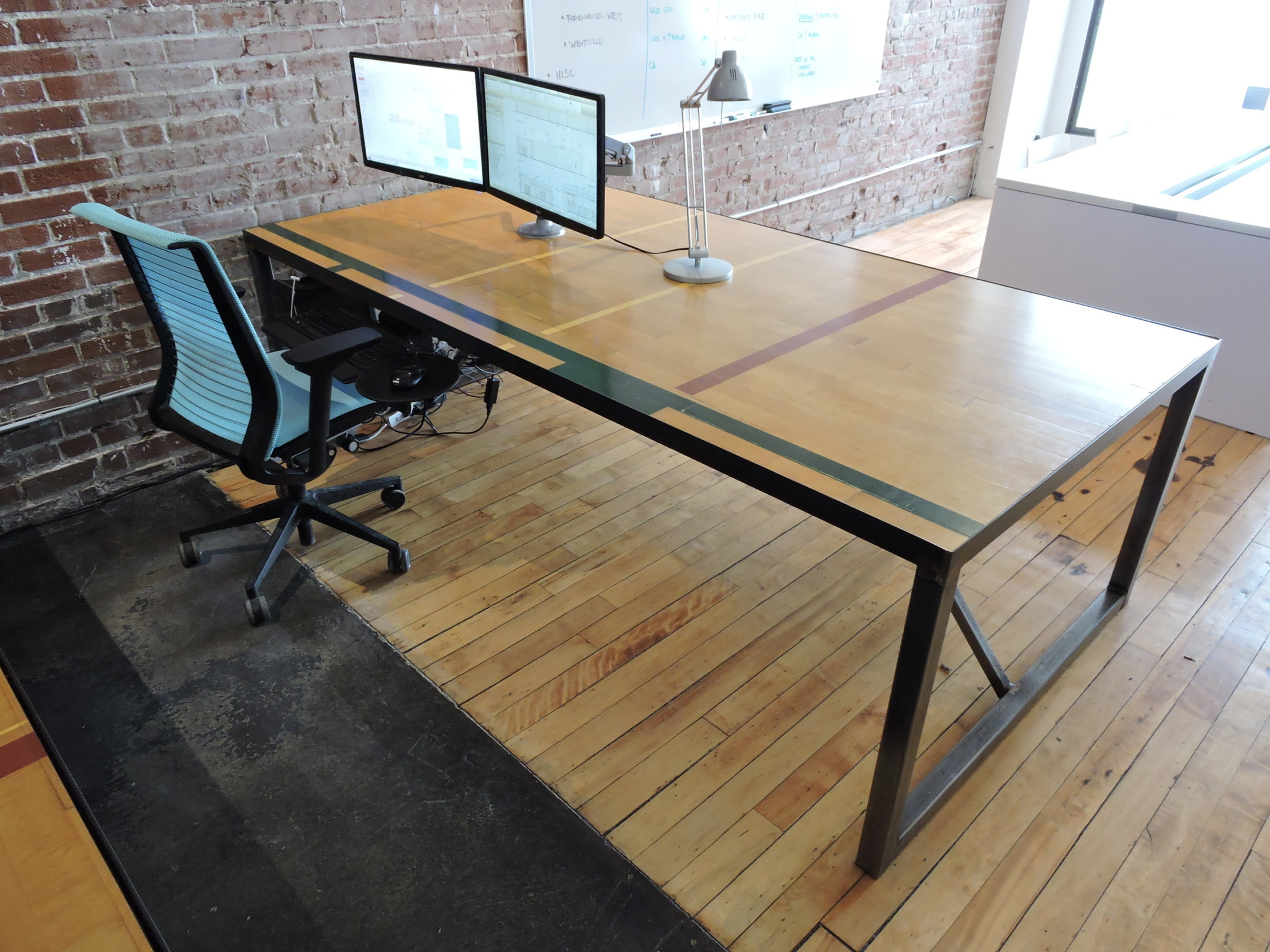
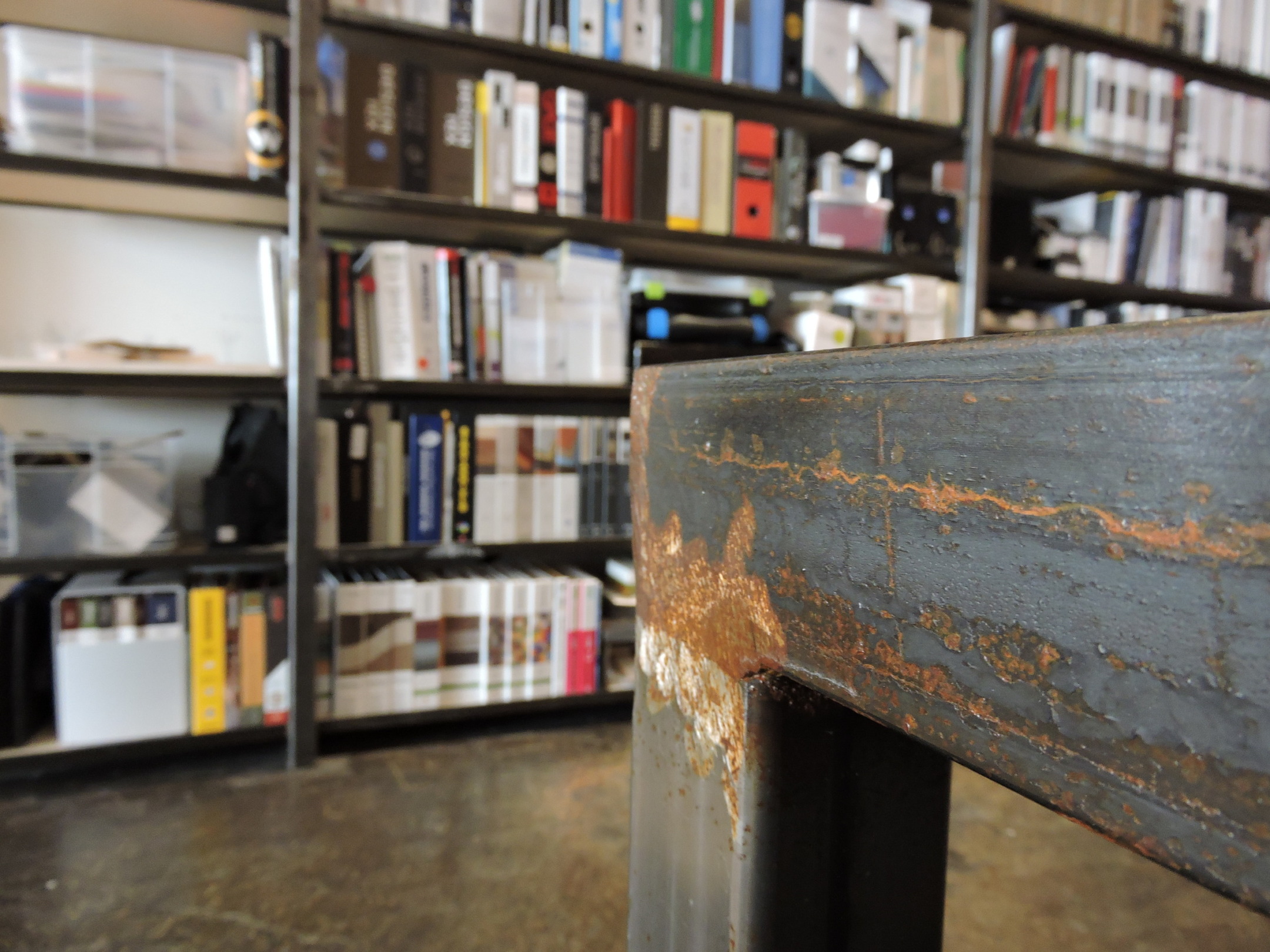
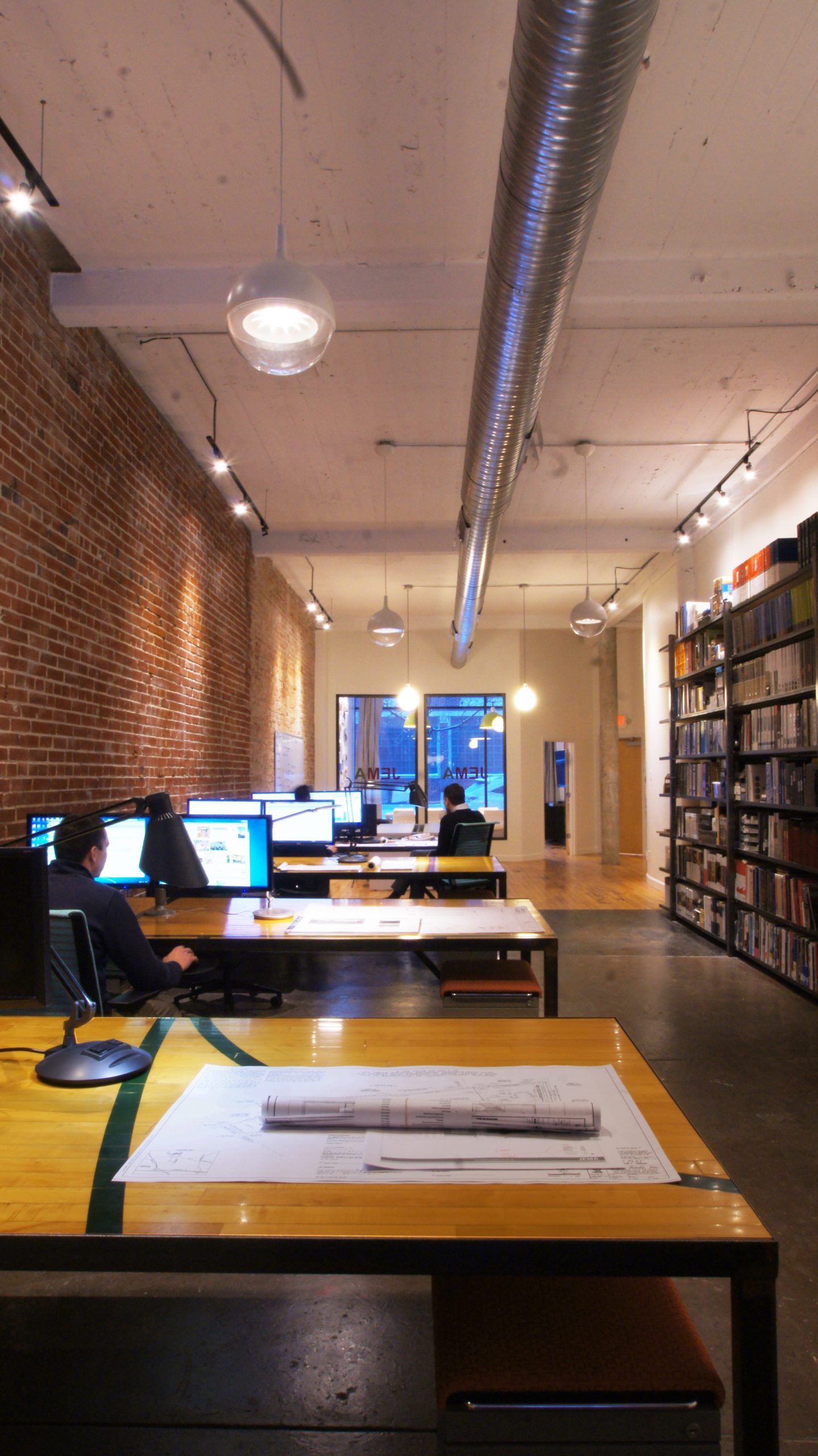
We see the garbage in the rose; it reminds us to not discriminate, to see the potential in all things and how a slightly different perspective can make a rose out of garbage.
